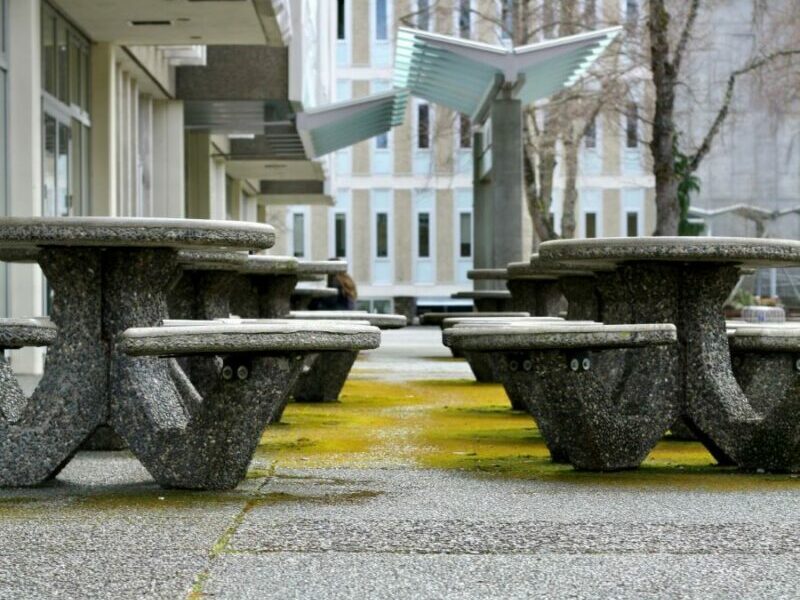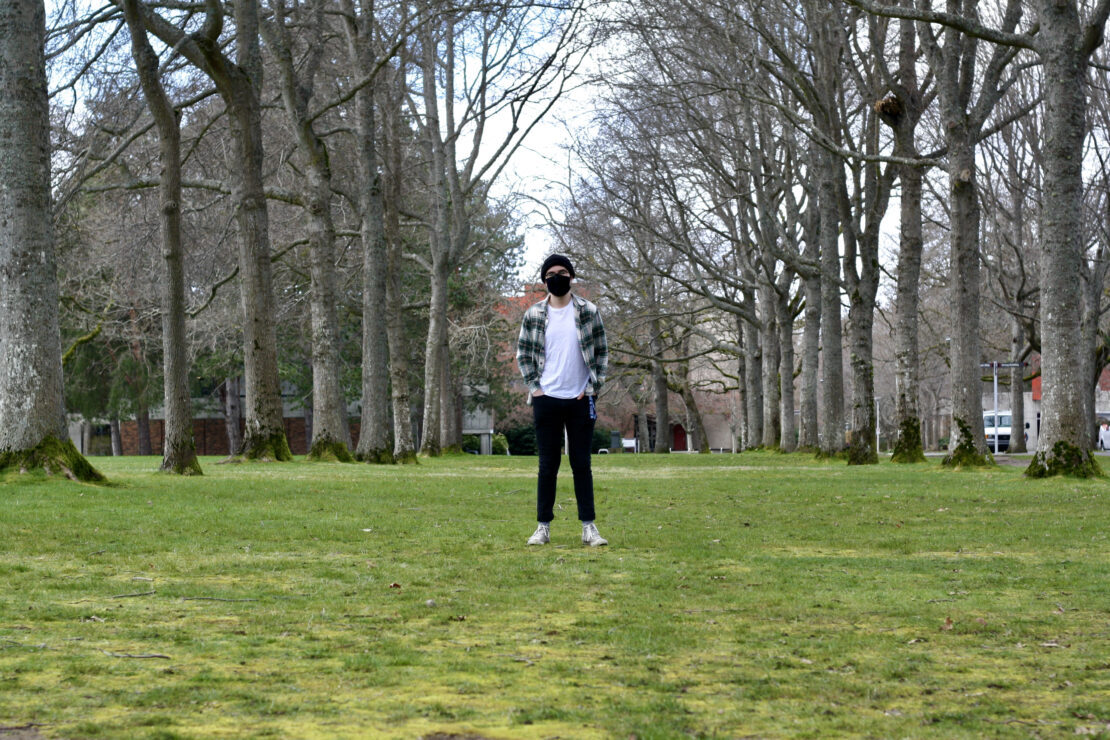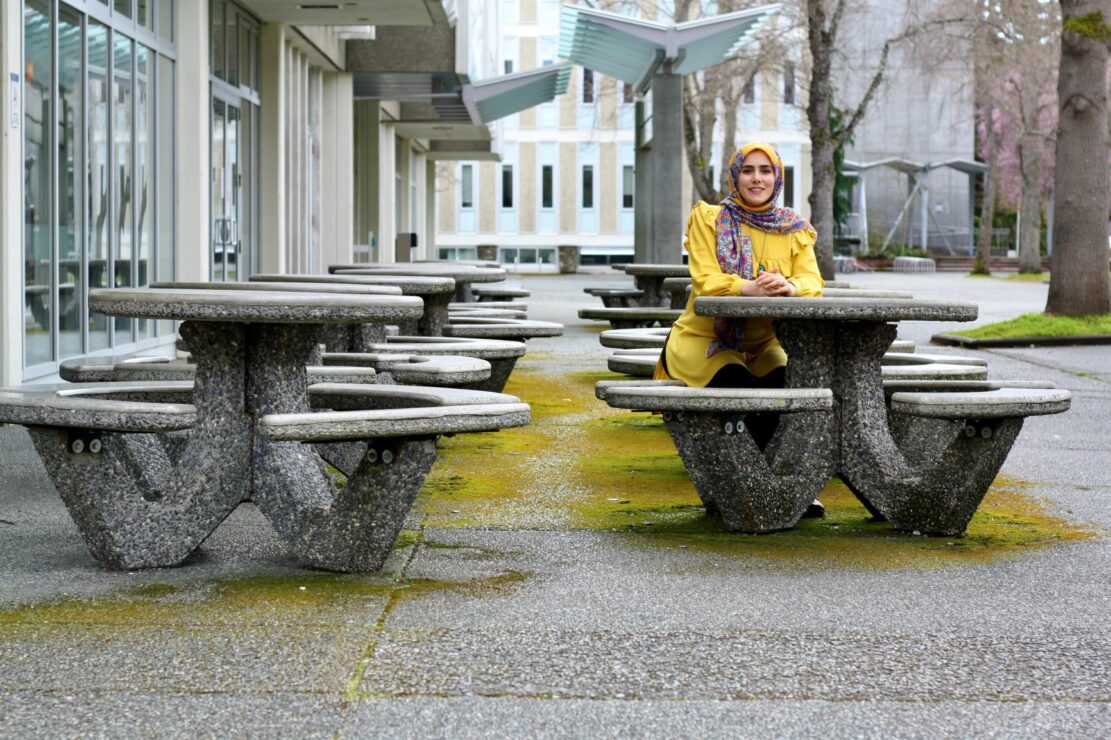
How the university responded to the pandemic
For the majority of the 2020-2021 academic year, the UVic campus was essentially deserted — slackliners were absent from the quad, there was never a queue at BiblioCafé, residence parties were prohibited, and classrooms and offices were mostly dark and empty. The normal crowds of thousands of Blundstone-wearing and Patagonia-sporting students were nowhere to be seen.
After a year of online school, UVic has announced that the university is preparing to return to in-person learning once again in the fall.
As students return to campus, questions remain about how UVic will respond to the pandemic. Although the future is debatably more uncertain than ever, UVic’s response to COVID-19 over the past year can give the university community some indication of where we might be heading.
Looking back on UVic’s response to COVID-19
Kane Kilbey was the director of the Emergency Operations Centre that the university established in response to COVID-19. Now, he continues in his role as the Associate Vice President, Human Resources and Co-Chair COVID-19 Transition Team. He says everything changed the week the World Health Organization declared COVID-19 a global pandemic.
Kilbey remembers watching the case counts rising across Canada and looking at how eastern Canadian universities were responding.
“The virus was actually headed west,” Kilbey said. “You could see the future coming based on what was happening elsewhere.”
The first COVID-19 case was reported in Canada in January 2020, but cases didn’t rise exponentially until March. On Feb. 29, B.C. reported the eighth case of COVID-19 in the province. On March 5, the first case of community transmission was identified in B.C.
B.C.’s testing capacity was very limited at that time. Although there were technically no confirmed cases on the island until March 11, Island Health later warned people to monitor for symptoms after a confirmed COVID-19 case at the popular downtown bar, the Sticky Wicket, between March 5-15.
On March 12, UVic just cancelled in-person instruction for classes with over 250 students and put new measures in place regarding international travel. There were 64 confirmed cases province-wide at that time.
On March 13, UVic announced all in-person classes were cancelled effective the following Monday, March 16. Island Health later confirmed that students were potentially exposed to COVID-19 in two psychology classes and one biology class on March 12.
UVic worked alongside the provincial government, health authority, and other postsecondary institutions to control the spread of the virus and keep students safe. The main goal of their messaging was to reassure students that they would not be abandoned in the wake of COVID-19.
The Martlet spoke with some students who had symptoms in the latter half of March and were forced to quarantine while they were studying for finals. For them, tests were simply not available, and they feel like they may never know if they had COVID-19.
A back to school like no other
In the fall of 2020, students returned to residence and some in-person classes began to take place once again. Ninety per cent of undergraduate classes were still online but some, particularly small classes in music and sciences, are continuing in-person. There are currently approximately 700 students living in residence, which is less than half of the normal 2 300.
On the first weekend back, students were keen to party on despite the pandemic. Campus Security and the Saanich Police Department shut the gatherings down. When the gatherings continued the next weekend, fines were given out.
Kilbey felt like the parties caused a moment of reflection.
“It told me, as someone who is a part of the [COVID-19] response team, that we have work to do to communicate the impact of COVID-19 across the campus community and ensure that our students have the best public health information,” he said.

Karen Johnston, associate director of public affairs, said UVic continues to spread awareness among students about the public health orders. They sent out emails, created a Community Living Handbook and informational posters, and promoted the public health measures on social media.
“Residence students have been instructed not to attend or host gatherings, as part of the ongoing protocols to protect health and safety in our communities,” Johnston said, adding that data around COVID-19 infractions on campus will be released in May.
COVID-19 cases on campus

Despite the lower numbers of students and staff on campus, UVic has seen two on-campus COVID-19 exposures in the last month. There was a COVID-19 exposure at the Sir Arthur Currie residence and another separate exposure at the school of music.
The university did not make information about these cases public. The Martlet obtained information about these cases via two separate internal notices. The university and the health authority will not say how many people contracted COVID-19 or had to isolate.
Students expressed their frustration about the lack of information on the university’s Instagram.
“I don’t want to return to classes in the fall if there will be no transparency,” one user commented. “How are we supposed to feel safe in September if you can’t even tell us what’s happening right now?”
UVic says they will only release information about COVID-19 cases publicly if Island Health is unable to identify all close contacts. The university says this policy is in place to protect privacy and encourage people to get tested.
“Protecting the privacy of COVID-19 positive individuals, while also providing people with the information they need to protect their health, is a top priority,” a statement released by UVic reads.
“Having individuals identify their symptoms immediately and seek testing is critical to controlling the spread of this virus. If individuals feel their privacy may be unnecessarily violated if they test positive it’s a detriment to everyone and the ability to fight this virus.”
UVic was not able to provide the Martlet with any data on how many students, staff, or faculty have contracted COVID-19 since the beginning of the pandemic.
No masks in class
The university community has not been immune to the financial impacts of COVID-19 either. As a result of COVID-19, 190 people were temporarily laid off or redeployed to another assignment. Of those people, 97 have been recalled or redeployed and 33 are working reduced hours or participating in work-sharing arrangements. The university expects to welcome back more ancillary staff as they transition to in-person again.
Some of these staff have been moved to the “Classroom Ambassador” role — a new position designed to inform students about COVID-19 guidelines on campus.
For those students that are on campus, the COVID-19 guidelines can be confusing. For instance, masks are not mandatory in class.
Students have to wear masks in indoor common areas, but they do not have to wear masks while they are sitting down in class or at a designated study space, such as in the library. The Student Union Building (SUB) is the main exception to this rule — students in the SUB have to wear masks at all times unless they are eating or drinking.
Each class area, whether it be a computer lab or classroom, has a safe-work plan. Alongside the classroom ambassador program, UVic has also introduced new measures around safe entries and exits from rooms, specific occupancy levels, and new cleaning procedures.

Kilbey says UVic has “engineered all our labs, studios, classrooms, [and] study spaces with physical distancing in mind,” so these spaces are now considered controlled areas.
Johnston says the university is still working with the provincial health officer and other post-secondaries to update safety protocols for the fall. To date, UVic has implemented 600 safe-work plans for on-campus units and activities.
Students reflect on a year without in-person class
For students, professors, and university staff, this year has thrown a wrench into their ideas of what university is supposed to look like. The Martlet conducted a survey last summer that found that an overwhelming majority of students thought online classes were of lesser quality than in-person ones. In December, the results of a survey by UVic echoed students’ frustrations with online classes and further highlighted how student mental health has been negatively impacted by this year.
First-year student Eric Klimek has never seen the campus without COVID-19 measures in place. He went to UVic to be closer to his family in North Vancouver.
Live music is a big passion of his, and something he has missed during the pandemic. The experience of living through COVID-19, however, has taught Klimek to not take things for granted.
“I realized it could go away tomorrow, and I’m not able to do that so I’ve learned to appreciate life more on the day-to-day but also on a grander scale,” Klimek said, adding that he is excited to tick off some bucket-list hikes and go skydiving once things return to normal.

Shilpa Parveen says she sees the benefits of online classes and actually found it easier to make friends in her online classes. She is a second-year international student in the psychology department.
“Online, everyone needs friends, so it’s easier to [make friends],” she said.
Of course, Parveen still misses her family and friends in Saudi Arabia and India. Although her sister lives here now, it has been two years since she has seen her family. During these times, she appreciates the support UVic has offered.
“The university has done a lot to make us comfortable,” Parveen said, adding that she has used the help desk for tech help, joined educational workshops, and become an active member of UVic’s Global Community.
Hanieh Almotahari is also an international student. For her, the Iranian new year was an especially tough time because she could not celebrate with family, friends, and traditional foods. She says Iranian culture tends to be more social so a lot of her close family and friends are feeling isolated.
Almotahari, a self-described extrovert and graduate student in the psychology department, is craving more social connection. Although she feels UVic’s Global Community did a good job trying to keep international students connected, she says the university could have done more.
Almotahari has been receiving support from UVic’s counselling services, but the frequency of the counselling sessions available has been a recurring issue. There are not enough counsellors to be able to receive counselling every week, she says.

In terms of her mental health, Almotahari has come to recognize the importance of her daily walks and meditations.
“I’m kind of a person who always gets energy from other people but [the pandemic] was a time that I questioned myself and how I can get that energy from myself.”
The greenery around UVic is one of her favourite things about living here, and Finnerty Gardens is one of her favourite spots.
This year, international students could also join in classes at UVic from anywhere in the world. Incoming international students could still come to Victoria this year, but they didn’t have to. For students who did make the journey, they would have had to quarantine.
This was the case for Hannah Brown, a first-year UVic student pursuing a PhD in the anthropology department. They are finishing their year without ever taking a face-to-face class at UVic.
Brown is from the United Kingdom and looks forward to exploring all that Victoria, and the rest of Canada, has to offer. So far, they have only seen Victoria and the inside of the Calgary airport. Although they miss their family, friends, and partner in the UK, they are ultimately glad that they decided to venture to Canada this year.
“[The pandemic taught me that] I’m more resilient than I thought I’d be,” Brown said. “It’s been a lot sometimes, but I managed to get through it all.”

Vaccines are a “TSN Turning Point”
Although the university has begun planning for a full return, there are not many details yet on what this will look like. Johnston says UVic will continue to be a predominantly face-to-face institution after COVID-19. But given that there are some pros to online learning and that the university has invested more in online learning technologies, Johnston says “we may see more blended and hybrid delivery options going forward.”
Kilbey has watched the pandemic evolve and been privy to many of the big-picture planning decisions around the university’s response to COVID-19. But even as cases continue to hit record-highs in B.C., Kilbey says he is hopeful for a return to in-person in the fall.
“It’s hard to see the future,” Kilbey said. “The impact vaccines are going to have on us is truly a TSN turning point for our society and for our campus.”
Just as Kilbey was looking at the eastern Canadian universities last March and realizing that COVID-19 was heading west, now Kilbey is looking to universities around the world for evidence of what UVic’s future might look like. He encourages students to look to examples in other countries, such as Australia and New Zealand, where COVID-19 isn’t having as much of an impact.
“That good future is out there — the future that the provincial health officer is promising us when she’s asking us to plan for a full return to campus activities — it exists,” he said. “And I recognize how difficult that is to see, but there’s evidence of that out there.”








